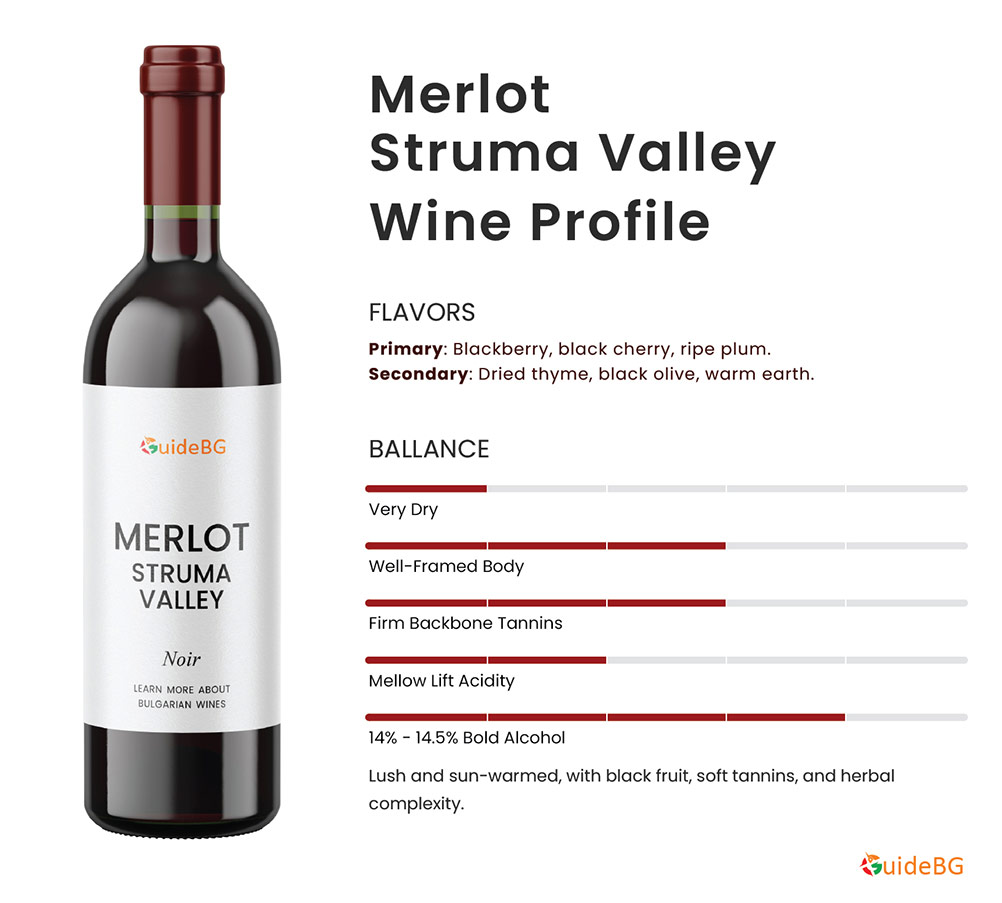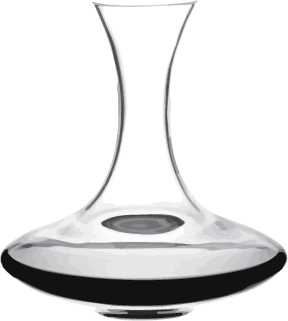In southwestern Bulgaria, the Struma Valley offers one of the country’s most Mediterranean climates — hot summers, mild winters, and firm diurnal shifts. Here, Merlot takes on a riper, softer character, often infused with herbal and savory notes reflective of the region’s wild flora.
Grown primarily around Sandanski, Melnik, and Damyanitsa, Merlot is often blended with native grapes like Shiroka Melnishka Loza, Melnik 55, Ruen, or Melnishki Rubin, but is also bottled as a varietal by boutique wineries. The resulting wines are generous, spicy, and approachable — with a signature Struma softness and warmth.

Lush and sun-ripened, Merlot from the Struma Valley offers rich blackberry, dark cherry, and plum notes layered with dried thyme, black olive, and warm earth. With bold alcohol, soft tannins, and mellow acidity, it delivers a smooth, herbal wine with Mediterranean charm.
Serving
15-17°C

Standard red

30 – 45 min

Food Pairing
It is excellent with lamb, beef meatballs, slow-roasted pork, or herb-marinated grilled vegetables. It also works well with traditional southwestern dishes like gyuvech or spicy sausages.
What to Look For?
Look for deep color, dark fruit aromas, and a warm, Mediterranean palate supported by savory spice and soft mouthfeel. Wines are often aged in Bulgarian or French oak for added depth.
Cellaring Potential
Better-quality Struma Valley Merlots can age 5–8 years, gaining leather, dried fig, and forest underbrush notes. Softer wine styles are enjoyable while young.
Blending Partners
Merlot here is often part of complex regional blends, including:
- Melnik 55
- Ruen
- Melnishki Rubin
- Cabernet Sauvignon
These blends enhance structure and aromatic lift while retaining Merlot’s generosity.
Alternative Grapes
Try Melnishki Rubin for darker, fuller spice or Melnik 55 for a fresher, cleaner local red. International comparisons include Grenache or Carmenère, which are warm, supple, and herbal.


